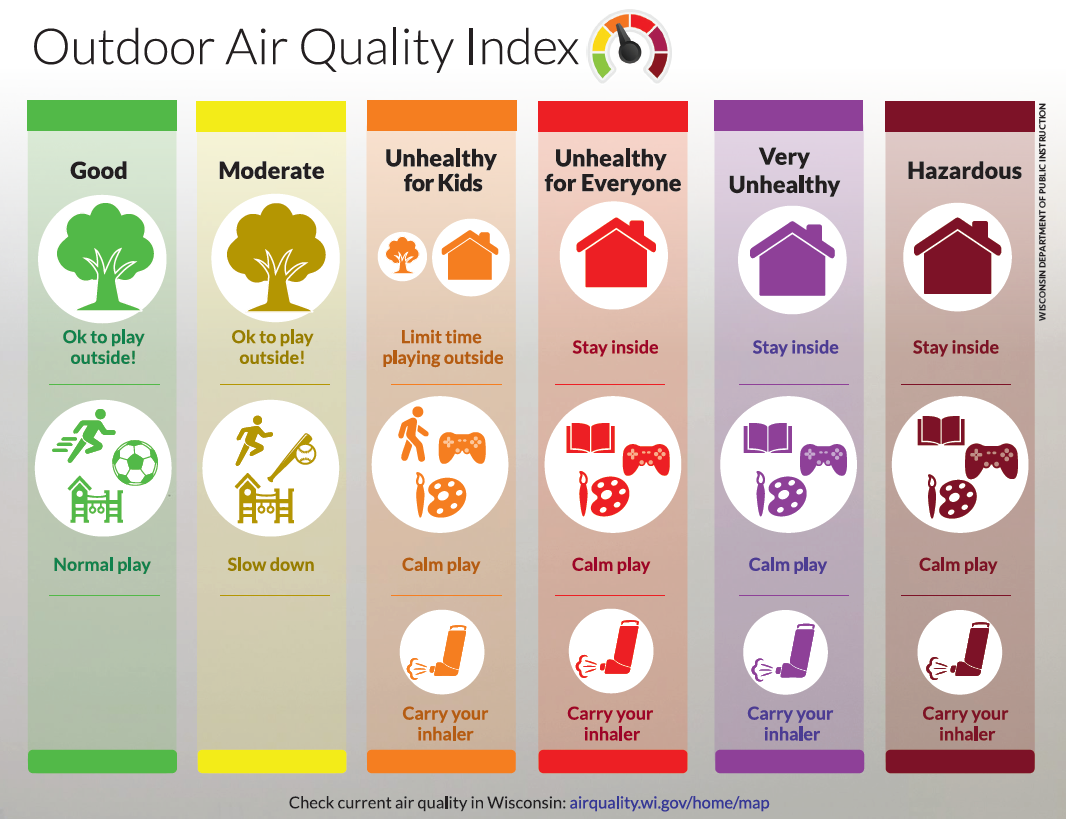
4 minute read
Smoke In The Air
Lindsay Haas and Craig Czarnecki
Lindsay Haas and Craig Czarnecki are communications staff in the DNR’s Air Management Program.
Last spring and summer, it felt like every week, air quality in Wisconsin was impacted by one thing or another. Here’s why.
In 2023, Canada had a record-breaking year for wildfires, fueled by record-high temperatures and widespread drought conditions. More than 40 million acres burned — an area larger than Wisconsin. Typically, wildfire consumes an average of 6 million acres of land annually in Canada.
The DNR’s Air Management Program issued 20 ozone advisories during the spring and summer months and 14 air quality advisories over the 2023 fire season, including a multi-day air quality advisory in late June. During that early summer stretch, the DNR’s air monitoring network measured some of the highest concentrations of particulate matter, known as PM2.5, or particle pollution ever recorded in the state.
WHAT IS PARTICLE POLLUTION?
Particle pollution is a general term for a mixture of solids and liquid droplets suspended in the air. There are many sources of particle pollution, but the most common are combustion-related activities, such as fuel burning and wildfires.
PM2.5 has a diameter of 2.5 microns or less. For perspective, there are 1,000 microns in 1 millimeter, so the particles in this air pollution are tiny.
Because they are so small, they can penetrate deep into the respiratory tract and even enter the bloodstream. This can cause health problems, particularly for those in sensitive groups, like people with heart and lung ailments, asthma, children and older adults.
According to the EPA, fires — including wildfires and prescribed fires — account for 44% of the nation's primary PM2.5 emissions.
HOW FAR-AWAY SMOKE IMPACTS US
Large wildfires produce significant amounts of smoke and supply the atmosphere with energy, sometimes even causing atmospheric phenomena such as lightning and extreme winds. These conditions allow the smoke to permeate the portion of the atmosphere where we live and breathe.
Once separated from the direct impacts of the fires, smoke plumes can be transported long distances by high- and low-pressure systems. Although smoke plumes often remain elevated well above where we live and breathe, a low-pressure system’s frontal boundaries, or the general descending air from a high-pressure system, can sometimes lead to significant smoke impacts at the surface hundreds or even thousands of miles away from where the smoke originated.
FUTURE OF WILDFIRE SMOKE
Historically, wildfires and their smoke impact Wisconsin in late summer. However, wildfire season has been starting earlier in recent years.
Many factors must align for major smoke events to occur. Wisconsin experienced that last summer, combining persistent drought conditions, high temperatures and just the right weather conditions.
As wildfire season expands and lengthens, wildfires will continue to happen and impact air quality.
The best way to prevent breathing particles during significant wildfire smoke events is to stay inside. Make sure all windows and doors to your home are closed.
If needed, upgrade your air conditioning and heating filters. The EPA recommends filters with a MERV rating of 13 or higher. MERV stands for “minimum efficiency reporting value” and measures how well a filter removes particles from the air. Finally, use an indoor air purifier or create your own using a box fan and furnace filters.
If you must go outside during a wildfire smoke event, watch for symptoms like coughing or shortness of breath, as these are signs to take a break or go inside. Consider wearing an N95 mask, especially if you’re outside for a lengthy time, and avoid or limit exercising outdoors.
STAY AIR AWARE
This summer, keep updated on air quality by following these tips:
• Before leaving the house and throughout the day, check air quality conditions for your location at fire.airnow.gov or airquality.wi.gov/home/map.
• Sign up to receive air quality advisory notices from the DNR at dnr.wi.gov/tiny/2721.












